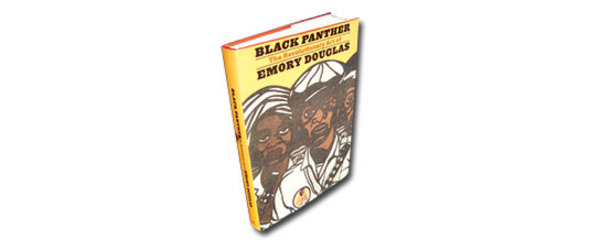The Art of Emory Douglas
The history of the Black Panther Party is filled with the bold-faced names of key […]
The Art of Emory Douglas
The history of the Black Panther Party is filled with the bold-faced names of key […]

The history of the Black Panther Party is filled with the bold-faced names of key leaders, martyrs, and political prisoners. But as Black Panther: The Revolutionary Art of Emory Douglas (hardcover; Rizzoli, $35) demonstrates, those images of raising fists and black berets wouldn’t have become such iconic images of black pride without the benefit of Douglas’ bold graphic design and communication savvy.
From 1967, when he laid out the second issue of the Black Panther newspaper, to 1979, when the paper folded, Douglas was the Panther’s official Revolutionary Artist, working mainly in posters and newsprint to spread the party’s beliefs. His rich body of work created a recognizable revolutionary “brand.” His raw, almost Orwellian caricatures of cops as dirty swine, with clouds of flies buzzing around them, helped popularize the term “pigs,” but Douglas was much more multi-faceted. He illustrated powerful political statements; one striking poster shows Bobby Seale strapped to an electric chair with a salivating vulture, representing the government, hovering overhead. Douglas was able to communicate the Panthers’ struggle against poverty and inequality beautifully, creating stunning images of dignified people, fighting injustice with rifles in hand.
Containing a wealth of images, along with interviews with key figures like Kathleen Cleaver and Amiri Baraka, this first-ever compilation of Douglas’ work documents the relationship of art and propaganda to party doctrine and history, while linking the images to the art of related Third World independence struggles. While comparisons between Douglas’ work and that of his 1960s American contemporaries would have been welcome, this volume makes a convincing case that Douglas’ art “provoked a new consciousness.”

